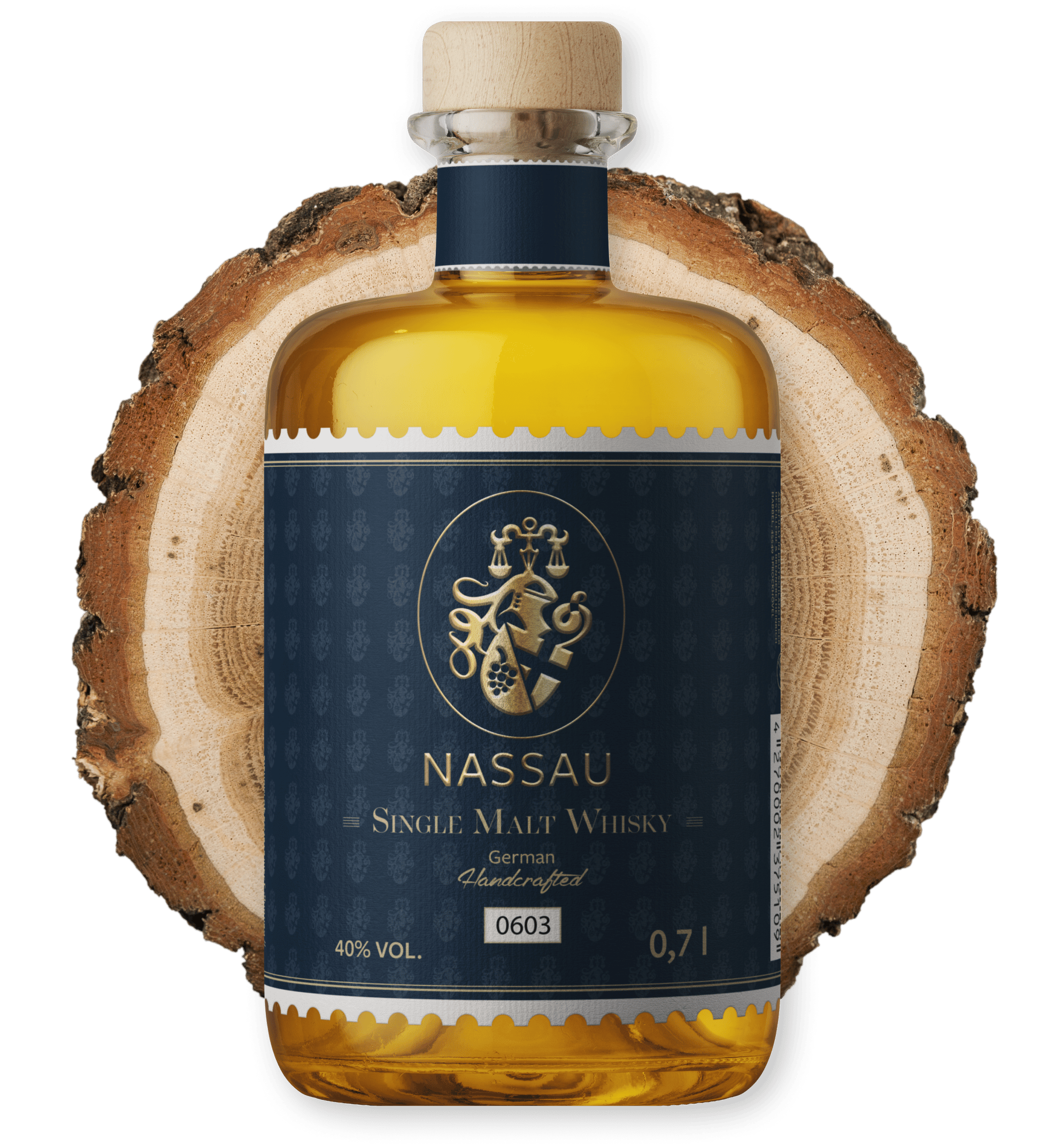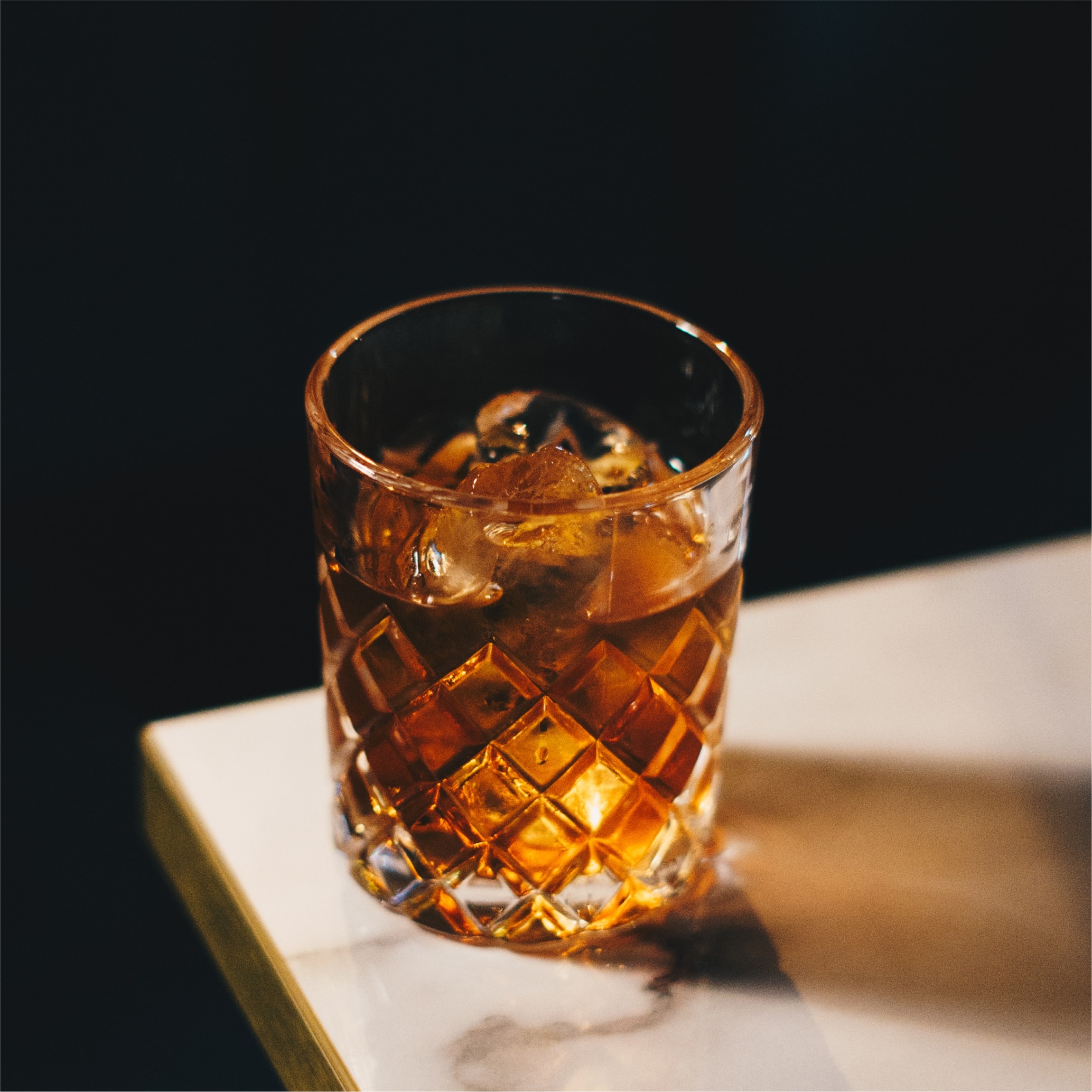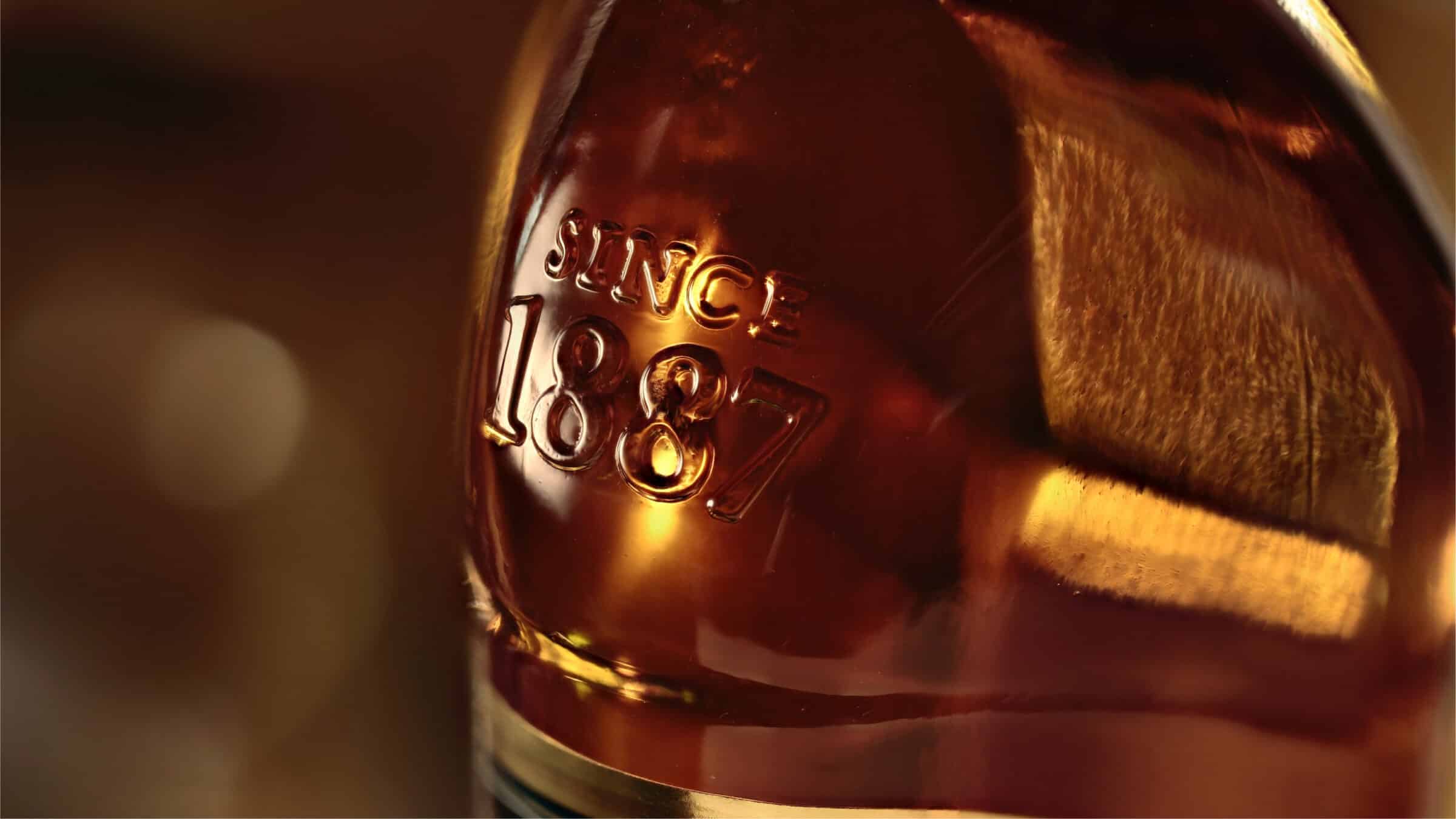


A distillate made from grain, containing at least 40% alcohol by volume and stored for three years. In Scotland it is called (Scotch) Whisky, in Ireland and the rest of the world it is usually called Whiskey.
A distillate made from grain, containing at least 40% alcohol by volume and stored for three years. In Scotland it is called (Scotch) Whisky, in Ireland and the rest of the world it is usually called Whiskey.
What makes the malt single? If the whisky consists of pure malt, but is mixed from several distilleries, it is called “Pure Malt” or “Vatted Malt”. If it comes from only one distillery, it is called “Single Malt”.
Blend of industrial alcohol and malt whisky (pure barley whisky). The designation Blended Whisky must appear on the label. 95% of these bottles come from Scotland (Scotch), the others from Ireland (Irish). Representatives of this whisky type are Johnnie Walker, Haig, Teacher’s, Dimple and many, many others. A compilation of typical blends can be found under Blended Whisky. Mostly these whiskies are produced with a very high circulation and are therefore not rare.
The American counterpart to blended scotch is blended bourbon. A purer form of Bourbon is the Straight Bourbon. Bourbons are usually written whiskey (not whisky). The Straight Bourbon contains no addition of industrial alcohol but is made from a mash mixture of corn, rye and barley. Wheat is rarely used. Typical representatives are Jim Beam, Wild Turkey, Four Roses, I.W. Harper.
The most valuable representative of the old whiskies is the pure malt whisky. The most important distinguishing feature is the distillery bottling as opposed to independent bottling. The latter is carried out by stating the distiller’s name but using a different label. Valuable bottles come, for example, from the distilleries Macallan, Bowmore, Glen Grant and Mortlach.
Moderately in special glasses, which remind of sherry glasses. Single Malt Whisky always without ice, still water is allowed for dilution. Blends and Bourbon also “on the rocks”.


Light whiskies as an appetizer (before the meal), peaty whiskies as a digestive (after the meal). Heavy solo, with shortbread or nibbles or with a good cigar.
A distinction must be made between the maturing time in the barrel and the subsequent time in the bottle. The time of maturation in the barrel is indicated on the label (12 years, 15 years, 21 years, etc.). If this information is missing, the whisky is usually worth very little. A vintage indication is also worth more than an age.

To say it directly and unvarnished: “Only older malt whiskies sometimes have a special value! The market for these bottles is determined by a few collectors. And these collectors only collect Malt Whiskies from renowned distilleries with original labels.
Not all whisky bottles develop equally well in value. A nice appearance of a whisky bottle is no indication of a good future performance.
There are various collecting strategies, which can be read in detail here:
– A bottle from every distillery
– All bottles of a distillery
– All original bottlings of a distillery
– Bottles from all distilleries of a region
– etc.
All collection strategies have the following in common:
Only original bottlings, i.e. bottlings from the distillery itself with original labels, are popular with established collectors. Only for these bottles there is a greater demand. And this ensures rising prices in the long run.
Besides this increased demand, one must also consider the supply. The famous saying: “Supply and demand determine the price!” also applies here.
To buy a standard bottling with 12 or 15 years makes therefore little sense. There are simply too many bottles on the market and the label does not change over the years. Often millions of bottles are in circulation worldwide.
Limited fillings are the solution to this problem. The distillery only fills a certain number of bottles, then that’s it. Examples of this are: Bowmore Claret, Black Bowmore, Macallan 18J 1980, Macallan 25J 1974, Glenmorangie Tain L’Hermitage.
All these bottles can be clearly identified on the label and you can’t buy them in the store anymore. But beware! A Bowmore Claret rose from 75 EUR to 175 EUR within a year. The Bowmore Voyage on the other hand did not move a single cent within a year.
In this case: Collecting a lot means having greater chances. And if you have a limited number of bottles, always take them immediately, the prices can only rise. To be able to act quickly, you should therefore acquire a money cushion for this purpose and not immediately spend it on increasing your collection. This way you can buy a limited bottling immediately and don’t have to worry about whether it will still be available next month.
Whisky is stored upright. Whisky in unopened bottles does not get better or worse when stored, unlike wine. The bottles must be stored upright, because the cork does not close as tightly as with wine. The cork on a whisky bottle is a utility cork in contrast to the disposable cork of a wine bottle. That is why it does not sit as tightly.
The whisky must not be exposed to direct sunlight. Otherwise it fades. A bar compartment or box protects the whisky from light. So a storage over 10 years is quite possible. During this time, however, the liquid level will decrease through slight evaporation via the cork. To observe a bottle, it is recommended to mark it with a small marker on the back of the bottle with a felt pen. In this way you can check whether the evaporation remains within limits.
If you want to store a whisky for a longer period of time, you have to think more about it. First of all you should make sure that the temperature is lower than the room temperature. The lower the temperature, the less evaporated. An extra cap over the cork also helps. But please make sure that this cap does not soil the original sleeve. This reduces the value of the bottle just like sealing wax, for example.
Bottles with simple screw caps must be regularly tightened by hand, because they always loosen by themselves and the whisky evaporates more and more. The G&M bottles are typical representatives of this kind.
If you store the bottle in the cellar, you should additionally protect the bottle from moisture. The label starts to mold relatively easily in a damp cellar. A thin plastic bag in which you pack the bottle airtight is ideal. But attention! The plastic bag must not contain any plasticizers or other chemical substances. They could fade the label and affect the bottle contents via the cork.
Opened whisky also behaves differently. It changes its taste. But this happens much more slowly than with wine, which becomes inedible within a few days. Opened whisky keeps for about 6 months. What happens during this time in the bottle?
First, alcohol evaporates and the whisky becomes softer in taste. The air in the bottle also contains active gases that react very slowly with the taste of the whisky. How the taste changes is not predictable. Sometimes it gets better; but often it gets worse.
Avoid these changes by leaving less air above the whisky. You can do this by decanting into a small half bottle or by filling the bottle with small glass balls (marbles, clickers, shots). Please do not use a carafe for decanting. We do not know of any high-quality carafe that is really tight over a long period of time. The carafe must have a plastic seal.
It is best, however, if you have not opened so many whisky bottles and drink the ones you open within a few months.
